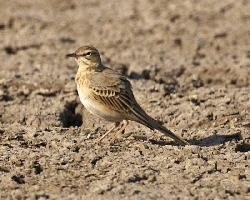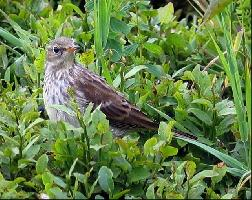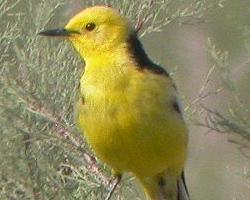
Description de l'animal
The White wagtail (Motacilla alba) is a small, elegant bird that is widely distributed across Eurasia and parts of North Africa. It belongs to the family Motacillidae, which also includes pipits and longclaws. This species exhibits a distinctive plumage and behavior that makes it easily recognizable and a favorite among birdwatchers.An adult White wagtail typically measures around 16.5 to 19 cm (6.5 to 7.5 inches) in length, with a wingspan of 25 to 30 cm (9.8 to 11.8 inches), and weighs approximately 20 to 25 grams (0.7 to 0.9 ounces). The bird displays sexual dimorphism, with males having more pronounced colors and markings than females, especially during the breeding season.
The most striking feature of the White wagtail is its bold black and white plumage. The upper parts are generally a sleek gray, while the underparts are pure white. It has a distinctive black cap and bib, with a white face and cheeks. The wings are black with prominent white wing bars and white edges, and the tail is long and black with white outer feathers, which gives the bird its name due to the characteristic way it wags its tail up and down.
White wagtails have a light and agile flight pattern, often seen flitting across open landscapes with quick, undulating movements. They are primarily ground foragers and can be observed darting across lawns, fields, and along the water's edges in search of insects and other small invertebrates. Their diet consists mainly of beetles, flies, spiders, and caterpillars, which they catch using their sharp, pointed beaks.
The call of the White wagtail is a cheerful and sharp "chis-ick" or "chis-wee," and its song is a pleasant twittering that can be heard during the breeding season. Males perform aerial displays to attract females and establish their territories.
Breeding typically occurs from April to August. The White wagtail is a monogamous bird and often forms long-term pair bonds. The nest is usually built in a sheltered location, such as under a roof, in a crevice, or on a ledge, and is constructed out of grass, moss, and twigs, lined with softer materials like feathers and hair. The female lays a clutch of 4 to 7 pale gray or creamy eggs with dark speckles, which are incubated for about 12 to 14 days before hatching.
White wagtails are migratory birds. Populations that breed in the cooler northern parts of their range tend to migrate southwards to warmer regions during the winter months. These migrations can be quite lengthy, with some birds traveling thousands of kilometers to reach their wintering grounds.
The White wagtail's habitat is diverse, ranging from urban areas, agricultural lands, and parks to riversides and wetlands. Its adaptability to different environments has enabled it to thrive across its extensive range. Despite facing threats from habitat destruction and pollution in some areas, the White wagtail is currently listed as Least Concern by the International Union for Conservation of Nature (IUCN), indicating that it is not at immediate risk of widespread decline.
In summary, the White wagtail is a charismatic bird known for its contrasting black and white plumage, lively tail-wagging behavior, and widespread presence across various habitats. Its adaptability and the joy it brings to observers ensure that this species remains a cherished part of the natural world.
Animaux similaires
Nouvelles photos d'animaux
Top 10 des animaux
- Dolphin gull (Leucophaeus scoresbii)
- Diana monkey (Cercopithecus diana)
- Moustached guenon (Cercopithecus cephus)
- Galápagos tortoise (Geochelone nigra complex)
- Russian tortoise (Testudo horsfieldii)
- Japanese macaque (Macaca fuscata)
- Stone loach (Barbatula barbatula)
- Common flying dragon (Draco volans)
- Greek tortoise (Testudo graeca)
- Vendace (Coregonus albula)


